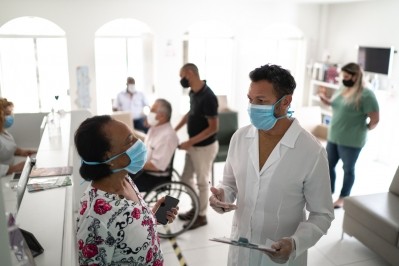Inato study digs deep into the global clinical trial marketplace, but what were the main findings?

The survey included 127 pharmaceutical sponsor respondents and 79 research site respondents, analyzing their perspectives working together on site feasibility questionnaires.
OSP wanted to dig a little deeper into the findings so arranged to speak to Marcy Kravet, head of oncology strategy at Inato.
What were the key motivations behind conducting this survey on site feasibility questionnaires and the site selection process, and what were you hoping to uncover?
We launched this survey to address the clear frustrations expressed by both sites and sponsors regarding the current feasibility process for site selection. Given the significant time investments and disappointing outcomes frequently reported, our goal was to pinpoint the principal challenges and identify key areas for improvement. We aimed to gather concrete data to better understand these issues and drive more effective strategies in site selection.
The survey revealed a significant trust gap between sponsors and research sites regarding the feasibility questionnaire. Can you elaborate on the factors contributing to this trust gap?
The survey underscored a significant trust gap rooted in the discrepancies between the responses provided by sites in feasibility questionnaires and their actual performance during startup and enrollment phases. From the sponsors' and CROs' perspective, this mistrust stems from historical experiences where site-reported capabilities did not align with their actual performance, prompting them to routinely adjust site enrollment projections and startup timelines. Conversely, research sites often face the challenge of providing accurate responses without complete information. Sites often find out critical information about the trial too late in the process, which can lead to less patient interest or a more challenging protocol than expected. This mismatch of expectations and transparency fosters a cycle of mistrust, complicating the site selection process and negatively affecting trial efficiency and engagement.
How do you think the lack of trust in site responses to feasibility questionnaires affects the overall efficiency and success of clinical trials?
The lack of trust in site responses to feasibility questionnaires significantly undermines the efficiency and success of clinical trials. This distrust prolongs the site identification, qualification, and selection process, often stretching over several months. Once sites are selected, about 30 to 50% fail to meet their enrollment targets, which severely impacts the sponsors' ability to adhere to planned startup and enrollment timelines. Ultimately, this inefficiency delays the overall progress of clinical trials, affecting both cost and time to market.
The survey highlighted that preexisting relationships significantly influence sponsor trust in selecting research sites. What steps can be taken to ensure that site selection is based more on merit and capability rather than past relationships?
As an industry, if we want different results, we need to do things differently. Sponsors want faster timelines, less competition, and more diverse patients but they need to take on a new approach to do that. To ensure site selection is based more on merit and capability rather than past relationships, sponsors must adopt a dual strategy.
While continuing to engage with previously successful sites, sponsors can also commit to include new, qualified sites. Setting clear, minimum selection criteria rather than seeking an "ideal site" profile helps avoid defaulting to familiar large academic centers and expands the pool of potential sites. Moreover, for sites without prior direct experience with a sponsor, conducting thorough qualification visits can provide valuable insights into the site's facilities, staff, and operational capabilities. These visits are crucial for assessing how well a site might meet the study's needs based on actual merit rather than past affiliations.
Additionally, incorporating third-party verification of a site’s experience with other industry sponsors can enhance trust and ensure a more comprehensive understanding of a site's historical performance and capabilities. This approach will pave the way for more informed and equitable site selection, aligning with the goals of achieving faster, more competitive, and inclusive clinical trials.
In your opinion, what improvements can be made to the feasibility questionnaire to address the concerns raised by both sponsors and research sites?
To enhance the feasibility questionnaire and address concerns from both sponsors and research sites, several improvements can be implemented. Firstly, transparency needs to be elevated; sponsors should provide more complete protocol and operational details along with realistic expectations about enrollment challenges and screen fail rates. Setting clear timelines for site selection decisions and maintaining consistent communication about the final decision are also essential to maintain trust and engagement.
To alleviate repetitive data entry burdens on sites, adopting technological solutions that allow for the reuse of previously submitted information could significantly streamline processes. This would greatly reduce redundancy and improve efficiency. Sponsors providing more details early in the process will allow sites to provide more realistic responses to feasibility questions. It’s crucial that sites assess their actual capabilities and limitations honestly, as well as opting out of trials where they foresee challenges in meeting the expectations. This approach will lead to more accurate planning and fewer performance discrepancies, benefiting the overall trial execution and outcomes.
The survey indicated that many research sites find the current feasibility questionnaires inadequate for presenting why they are best suited for a trial. How can the questionnaire format be redesigned to better showcase the capabilities of research sites?
Sponsors require detailed insights into a site's experience, capabilities, facilities, and patient access to ensure suitability for a trial. It is also crucial for sponsors to understand more qualitative aspects of a site such as how sites engage with and support diverse communities relevant to the study's focus.
Instead of adding more questions to the feasibility questionnaire, employing technology tools that enable sites to build and repurpose comprehensive site profiles, such as what we use at Inato, could be transformative. These profiles contain both quantitative and qualitative information about the sites, from their past experience and capabilities to enabling sites to spotlight how they’re building trust and engaging patients in their community. These profiles can be easily reused allowing sponsors to access detailed, current information without imposing additional administrative burdens on sites, streamlining the site selection process while ensuring that essential criteria are thoroughly assessed.
Both sponsors and research sites reported high levels of stress associated with the feasibility process. What strategies or interventions can be implemented to alleviate this stress and improve collaboration between stakeholders?
It’s 2024 and yet the feasibility process is still very manual. The current manual methods—characterized by extensive email exchanges and laborious reviews of Excel spreadsheets—contribute significantly to the stress and inefficiency of the process. Implementing AI and other technologies can automate routine, non-study-specific aspects of the feasibility questionnaire, thus reducing the burden on sites and speeding up the overall process. Additionally, technology facilitates asynchronous communication, minimizing the need for repetitive calls and emails. This can streamline interactions and make the scheduling of qualification visits more efficient.
On the non-technical front, transparency is key. Sharing comprehensive details about the study and operational plans from the outset can significantly reduce stress for research sites. This includes providing information about vendor requirements and training as early as possible, allowing sites to fully understand what will be required to successfully execute the study. Keeping sites well-informed and engaged throughout the process fosters a sense of partnership and collaboration, easing the feasibility process and building trust between stakeholders.
The survey also mentioned a lack of communication and clear decision timelines for research sites not selected for a study. How can sponsors improve communication and transparency throughout the site selection process?
Improving communication and transparency throughout the site selection process is crucial to addressing the concerns raised by research sites, who often feel left in the dark after submitting their feasibility questionnaires. Sponsors should establish and share a clear timeline for the site selection process with all potential sites from the outset. This timeline should include key milestones, such as when decisions are expected to be made. If there are delays or changes in the timeline, sponsors must proactively update all sites involved to keep them informed. This reduces uncertainty and helps sites manage their expectations and planning. For sites not selected, sponsors should communicate the reasons behind the decision. Whether it’s geographical limitations, discrepancies in capabilities, or the demographic reach of the patient population, providing specific feedback helps sites understand where they might not meet the current trial’s needs. This transparency not only aids sites in addressing these gaps for future opportunities but also fosters a more collaborative and respectful relationship.
Are there any initiatives or innovations that Inato is working on to address the challenges identified in the survey and improve the feasibility process for both sponsors and research sites?
We are actively advancing several initiatives to enhance the feasibility process for both sponsors and research sites. Our global marketplace was created to transform traditional feasibility and foster more effective, inclusive, and collaborative clinical trials. We are continually adding new features, such as the creation of robust and reusable site profiles, that significantly reduce the burden on sites. We have and will continue to expand our platform's diversity assessment capabilities to include detailed assessments of a site's demographic reach, allowing sponsors and CROs to view the race, ethnicity, and socio-economic characteristics of the populations in the site’s location. Our newly launched pre-selection and site initiation modules allow for more efficient interactions between sites and monitors. Through the marketplace, these parties can schedule visits and exchange essential documents, which has already resulted in a three-week acceleration in the study startup process. We are also ramping up our use of AI to improve the accuracy and efficiency of site-sponsor matching, streamline the activation process, and actively support sites in meeting their enrollment targets. These AI functionalities are being developed to ensure that selected sites on Inato are not only well-matched with right-fit trials, but also well-equipped to meet their targets.
Looking ahead, what do you envision as the future of the site feasibility process in clinical research, and how do you see Inato contributing to positive changes in this area?
Looking ahead, the future of the site feasibility process in clinical research is poised for a transformative shift towards efficiency, transparency, and reduced burdens for both sites and sponsors. At Inato, we are driving this transformation by declaring an end to redundant and burdensome feasibility questionnaires. Our approach leverages cutting-edge technology and AI to revolutionize site selection and activation processes, ensuring the process is more collaborative, effective, and faster than ever before.
Inato is redefining how sites interact with clinical trials by enabling them to evaluate multiple trials and select those that best suit their capabilities and the needs of their patients. This empowerment allows sites to make informed decisions, reducing mismatches and increasing trial success rates. We are creating a positive, effective system where sites that consistently meet their commitments gain increased trust and receive more trial opportunities across sponsors. This merit-based approach fosters a more reliable and dynamic clinical trial ecosystem. With the integration of new technology and AI, Inato is transforming the entire site selection and activation process. By improving access and operational efficiency, we are shortening timelines and reducing the overall complexity of trial setups.
Inato's marketplace is setting the stage for a more streamlined and positive feasibility process, significantly reducing burden and frustration for all stakeholders involved in clinical research. This vision for the future not only enhances the speed and effectiveness of research, but also builds a more collaborative clinical research community.
























